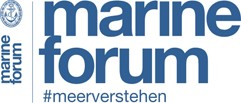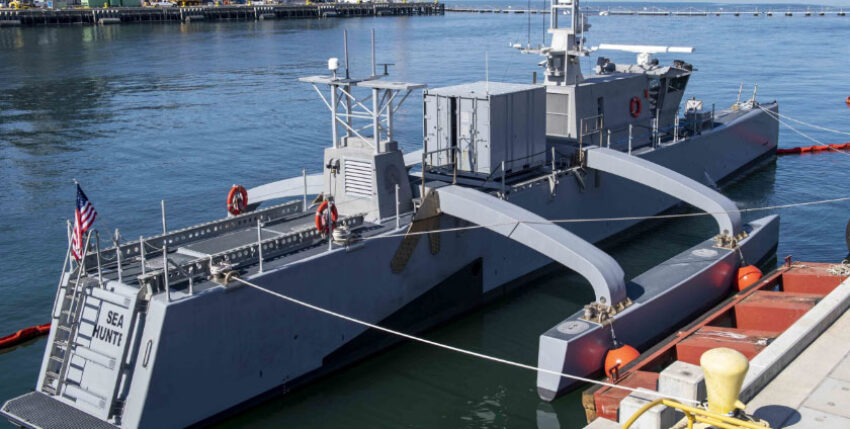New ideas for equipping maritime special forces were presented at a symposium. This will significantly expand their area of deployment.
The annual conference of the US Joint Special Operations Command (Socom) was expanded for the first time this year to include additional interest groups. Called SOF Week 2023, the conference took place in Tampa, Florida, in May. More than 15,000 visitors - including many members of friendly armed forces - were counted over the course of the event. In addition to the presentations and panel discussions, the main attractions were the more than 575 exhibitors from the defence industry. The range also included many operational systems and equipment for maritime special forces.
Despite their already high-quality equipment, special operations forces (SOF) are constantly on the lookout for new technology to maintain or expand their operational advantage. "Technology is changing the way special operations forces operate in the maritime domain in many ways," explained Rear Admiral Keith Davids, commander of the US Navy's Naval Special Warfare Command (NSWC), on the sidelines of the conference. "We can now operate in areas that were previously inaccessible to us. [Technology] gives us better situational awareness. It allows for better communication, not only between strike teams, but also with sensors and unmanned systems. It allows for scaled weapon effects and increases our operational range."
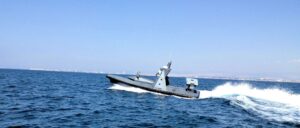
Above all, Davids wants the defence industry to provide even more powerful deployment platforms that enable rapid and covert access to other areas of operation, as well as command and communication systems to set up interference-protected tactical networks. Autonomous or remote-controlled surface and underwater vehicles, which could be used as reconnaissance vehicles, suppliers or weapon carriers, are also a new procurement priority, particularly for operations in littoral waters.
Autonomous systems
Various autonomous systems were exhibited or demonstrated during the conference in the congress centre's marina. The Sea Hunter is a 40.6 metre long, 145 tonne displacement unmanned boat. It is currently being tested by the US Navy as part of fleet exercises. The Sea Hunter can be remote-controlled or autonomously follow a prescribed route. The boat, which was developed by Leidos and is equipped with a large number of sensors, is designed to remain at sea for up to 90 days and cover up to 10,000 nautical miles. The range of tasks includes locating and tracking submarines using towed sonar, general reconnaissance and surveillance tasks as well as other unspecified support tasks. Armament of the boat type is not currently planned, but would be possible in principle. SOF-relevant tasks would be surface and underwater reconnaissance, the supply of dispersed task forces or, with the appropriate equipment, electronic warfare.
The eleven metre long, unmanned, rigid-hulled inflatable boat Protector was developed jointly by Rafael, BAE Systems and Lockheed Martin. It has an operational range of 600 miles and can reach speeds of up to 40 knots. The payload capacity is more than two tonnes and includes cameras, radar and a laser seeker. Equipped with a Rafael Mini Typhoon weapon carrier, the boat carries a machine gun and two Spike precision missiles for engaging sea or land targets. These missiles can be equipped with either armour-piercing warheads or multi-purpose warheads. Eloka equipment is also available. Special forces can use the Protector as a reconnaissance platform or for offensive missions at a greater distance from operational personnel. The air-deployable boat can be used in littoral waters as well as on inland waterways and rivers. It can be operated from a ship, a manned boat or from land.
Typhoon and Spike can also be mounted on manned special forces boats. The four Mark V speedboats of the Greek naval special forces will be equipped with the Spike-ER 2 missile variant (range: 10 km). The boats, which originate from US NSWC stocks, will carry the weapons on the aft deck. The all-weather missiles, which are equipped with optical and infrared homing heads, have a low radar signature and are suitable for surprise attacks by day and night.
The 1.30 metre long underwater robot Sea Wasp developed by Saab can be deployed from the beach or from a boat. Only two people are required for this. The primary task is to remove mines and underwater explosives, but the Sea Wasp can also be used for underwater exploration or for inspecting ship hulls, pipelines and other objects. The device is equipped with a multifunctional gripper arm, video cameras and sonar. The maximum operating depth is 150 metres.
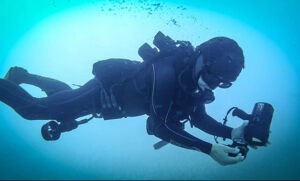
The company Patriot3 presented the Hammerhead SMV (Subsurface Multimission Vehicle) to the public for the first time during SOF Week 2023. According to the company, the device is already in use by a small number of US special forces and some foreign services. Hammerhead reaches a diving depth of 92 metres and can operate autonomously, by remote control or directly by a diver. Thanks to its modular configuration, the underwater vehicle can be optimised for different tasks. In its standard configuration, Hammerhead consists of five modules: Navigation and control, payload, guidance system, battery and propulsion. Several payload modules can be added according to mission requirements to accommodate additional air tanks, weapons and specialised equipment for the combat swimmers. Sonar, cameras and GPS are used to navigate through obstructed waters and allow the SMV to be used to survey the seabed, for example in the run-up to an amphibious operation.
Personal equipment
Patriot3 also presented the Jetboots propulsion system for combat divers. The propulsion battery and control unit are strapped around the diver's waist with a belt. The battery and control unit are connected by cable to the two thrusters, which are strapped to the diver's thighs; the adjustable thrusters are driven by low-noise direct current motors. The system allows up to 3.9 knots of speed at a maximum diving depth of 92 metres. The lithium-ion battery stores enough energy for up to six hours of use, with the actual operating time depending on the speed of travel. Similar to a diving sled or diving scooter, Jetboots reduces the risk of exhaustion during the combat swimmer's covert approach. Unlike a diving sled, however, the soldier has both hands free to manipulate objects or use weapons and sensors. Agility and responsiveness are also better compared to the diving sled.
Jetboots can be integrated with the Dive Tablet 2 and the DiveLog navigation software from Shark Marine Technologies. The diver can use the tablet to continuously monitor the battery power, remaining distance and estimated time of arrival at the destination, as well as the current position and water depth.
The Recce 360 tactical camera manufactured by Bounce Imaging is capable of capturing 360-degree video and audio in any environment. Recce 360 can be controlled remotely via smartphone app and transmit images in real time to the operator and other team members. The spherical camera can be thrown like a baseball and is designed to provide special operations forces with a reliable situational awareness in complex scenarios such as hostage rescues and counter-terrorism operations, while keeping personnel undercover. The camera is also equipped with infrared and thermal sensors as well as a flash-bang mode that can stun and disorientate enemies.
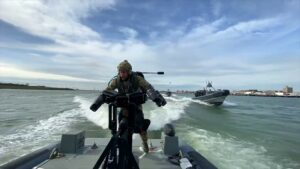
A consortium of companies including Global Ordnance, Mountain Horse Solutions and Gravity Industries demonstrated a one-man jet suit at the Port of Tampa, within sight of the convention centre. The aircraft consists of a 3D-printed modular rocket backpack with miniature gas turbines and two arm-mounted thrusters and control jets. At present, the maximum flight time is four to five minutes, which corresponds to around three to five miles. The maximum speed is 80 knots and the service ceiling is 3700 metres. As demonstrated in Tampa, the jet suit can also be deployed from a moving boat. The manoeuvrable device enables the soldier to land on roofs, on land or on a moving boat in the smallest of spaces, even in places where abseiling from a helicopter would not be possible.
Outlook
SOF Week 2023 emerged from an annual symposium that was primarily aimed at discussing the needs of US special forces with the defence industry. However, American SOF also recognise that their strength depends to a large extent on cooperation with friendly forces. Interoperability is a prerequisite for optimal co-operation. "We need to move faster than before to make [new] technologies available to our allies and partners," explained Sophie Hill, Head of the Resource and Procurement Planning Unit at NSWC. This made the participation of special forces from many partner nations at this year's event all the more important. "These relationships cannot be maintained from a distance," emphasised Hill. Consequently, the next special forces conference in Tampa will be organised internationally from the outset.
Sidney E. Dean
